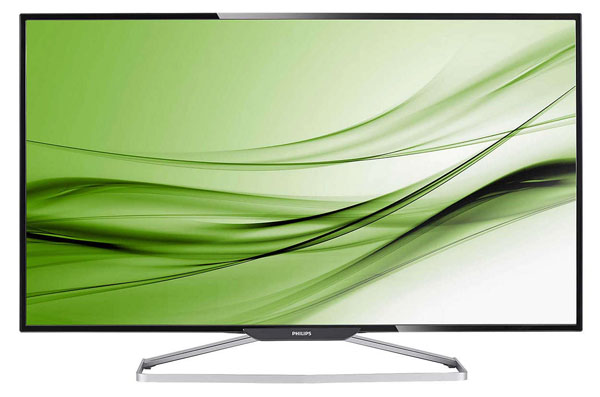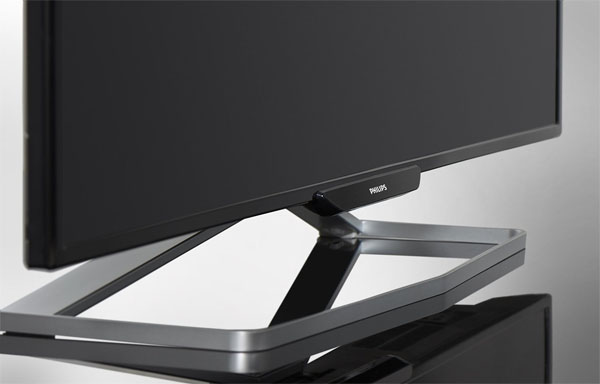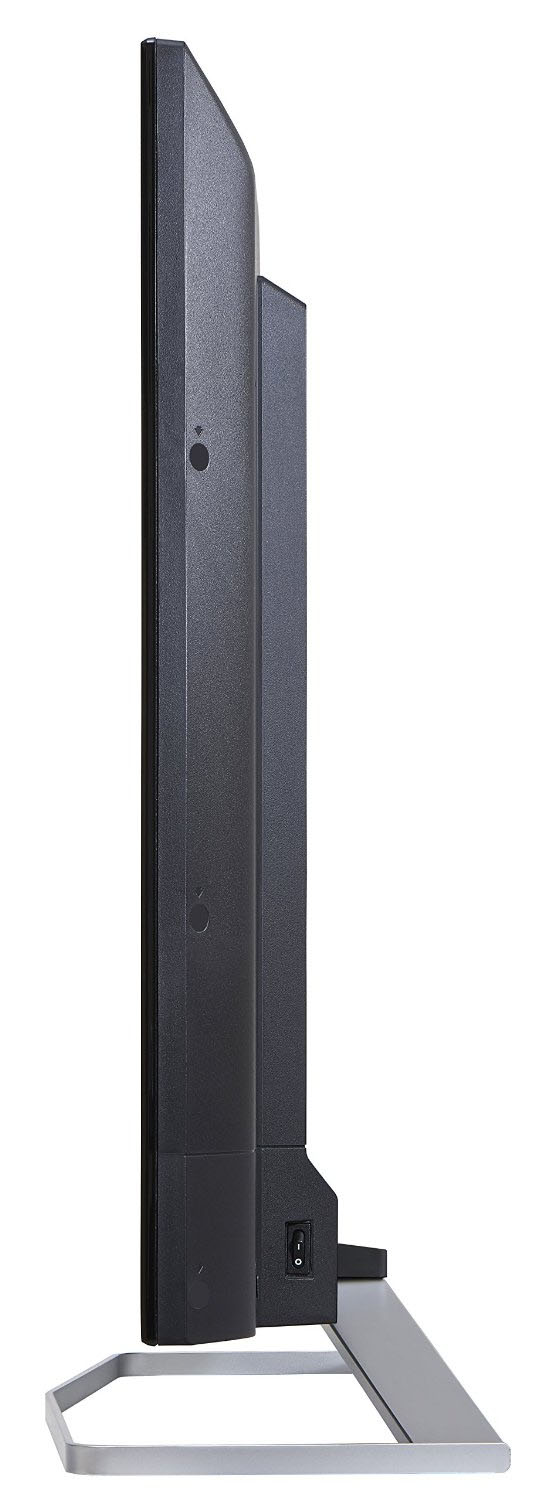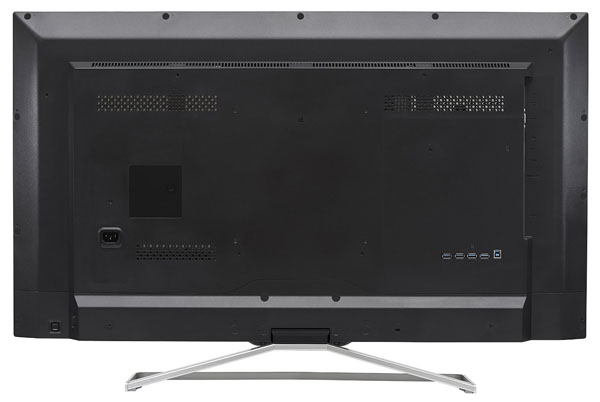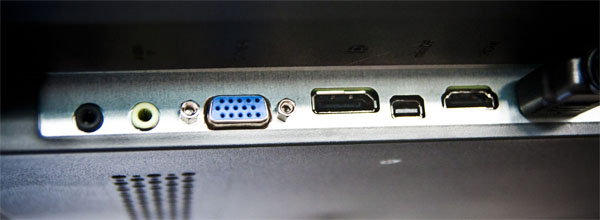Philips BDM4065UC 40-inch Ultra HD Monitor Review
Why would you put the Philips BDM4065UC on your desk? Because it's 40 inches with Ultra HD resolution and a 5000:1 contrast ratio. Today we check it out in our lab.
Why you can trust Tom's Hardware
Packaging, Physical Layout And Accessories
The BDM4065UC comes boxed like a television in a shallow carton with both stiff and soft foam protecting the contents. It’s lighter than you’d expect given the size but we suggest carefully inspecting your shipment if you buy mail order.
The accessory bundle includes an IEC power cord, cables for HDMI, VGA, USB 3.0 and analog audio. There is also an RS-232 connector for control purposes. Curiously there is no DisplayPort cable in the box. The HDMI inputs only support 3840x2160 resolution up to 30Hz. If you want 60Hz, you’ll have to source your own DP cable.
Rounding out the bundle is a CD-ROM with the user manual and a printed quick start guide.
Product 360
When you unpack the BDM4065UC, have a Phillips-head screwdriver at the ready because you’ll need it to assemble the base. It’s made from a nice piece of cast aluminum and a thick stamped-steel part connects it to the panel. Once complete the package is very solid but there is no adjustment provided. It’s a shame there isn’t at least a tilt function because the panel is held at a perfect 90-degree angle to your desktop and sits only three inches from the surface. We wish it could be raised a bit because it’s otherwise quite comfortable to use at a 36-inch viewing distance.
The screen coating is a little glossier than a typical monitor but still capable of managing reflections. With so much area, you’ll need to take a bit more care with your lighting to prevent glare. The picture is razor-sharp however as the TFT layer is very close to the front with almost no air gap.
Here is a close-up of the aluminum stand. It looks spindly but it holds the panel solidly. It doesn’t hurt that it only weighs 21 pounds but there is no wobble at all. If you’re looking for the OSD controls, you won’t find them in the usual spot. Feel around the back of the lower right corner and you’ll find a joystick that handles all menu navigation. There’s more about it on the next page.
You can’t see the speaker grills in this photo but they are on either side of the Philips logo and face downwards. Their frequency range is small and they sound a bit harsh but they’ll play plenty loud. We set the volume slider on 60 (out of 100) for a comfortable listening level.
Get Tom's Hardware's best news and in-depth reviews, straight to your inbox.
From the side the BDM4065UC isn’t much thicker than smaller monitors. A small bulge at the bottom means you’ll have to be careful when selecting an aftermarket wall mount. The panel won’t quite sit flush but if the bracket is more than half-an-inch deep, you’ll be fine.
Further complicating the wall-mount are the USB and power connections which face backwards. You’ll need at least two inches clearance for the power cord. That at least ensures the vents will receive proper airflow. You can’t quite see the OSD joystick in this picture but we’ve provided a better shot on page three. The VESA mount is 200mm so if you plan to use your own bracket or stand, be sure to get the larger size.
The input panel runs up the panel’s left side and includes two DisplayPort connectors, one of which is mini. Philips doesn’t specify the version but it’s at least 1.2 since you can input a signal of 3840x2160 at 60Hz. The two HDMI inputs are likely 1.4a since they only support the full resolution at 30Hz. One of them is MHL compatible up to 1920x1080 pixels at 60Hz. You also get a legacy VGA input which is also limited to 1080p/60. The analog audio jacks consist of one input and one output for headphones or powered speakers. Not pictured is the RS-232 input which can be used to control the BDM4065UC through an automation system like Crestron or AMX.
Current page: Packaging, Physical Layout And Accessories
Prev Page Introduction Next Page OSD Setup And Calibration
Christian Eberle is a Contributing Editor for Tom's Hardware US. He's a veteran reviewer of A/V equipment, specializing in monitors. Christian began his obsession with tech when he built his first PC in 1991, a 286 running DOS 3.0 at a blazing 12MHz. In 2006, he undertook training from the Imaging Science Foundation in video calibration and testing and thus started a passion for precise imaging that persists to this day. He is also a professional musician with a degree from the New England Conservatory as a classical bassoonist which he used to good effect as a performer with the West Point Army Band from 1987 to 2013. He enjoys watching movies and listening to high-end audio in his custom-built home theater and can be seen riding trails near his home on a race-ready ICE VTX recumbent trike. Christian enjoys the endless summer in Florida where he lives with his wife and Chihuahua and plays with orchestras around the state.
-
Oleander Bought one back in january. Best decision ever!Reply
A lot of bad stuff were said about it in forums (for all the wrong reasons) so it's nice to see that for what I use it (non first-person gaming and all-round) this review vindicates it.
Only remaining issue is the flicker of the backlight if brightness is not at 100%, but since the brightness is so low, it's not a problem to me. -
cats_Paw For professional use, absolutely.Reply
For gaming, probably not (Black levels are amazing for LED panel, and also contrast is amazing, but color delta and input lag... no way).
Plasmas are still king for gaming in my books, too abd they are almost all gone by now. -
Maryland_USA A completely unique product? I don't think so. Several other 40-inch monitors are available that will drive a VA panel at 3840x2160@60Hz through both DisplayPort 1.4 and HDMI 2.0. They're sold by AMH, Crossover, Iiyama, MIcroboard, and Seiki. Step up to 43 inches, and you must add Wasabi Mango. All but the Seiki and Iiyama cost less than the Philips.Reply -
Larry Litmanen I currently game on a 32 inch TV, honestly you can not go back to a monitor with a better resolution that is 24 or 27 inches. Once you go big it is just amazing.Reply
It's not just the width, you also need that vertical screen real estate.
-
hotdogee "Nearly every LCD panel on the planet is made by either Samsung, LG or AU Optronics. A few are also made by Innolux (formerly Chi Mei). But the Philips BDM4065UC is made by TP Vision, which is the actual owner of the Philips brand."Reply
The panel is made by Innolux for TP Vision. -
Eggz Great to see this. Is tom's planning on reviewing the new LG 4K OLED displays? They would seem to score very well in just about every category that matters for professional use. I'd love to see it, and the reviewers would also probably enjoy playing with one. Consider it, please.Reply -
Xorak I used a 32" 1080p TV for a long time, so I completely get the appeal of a big screen with great contrast and vibrant color, even if it's not the fastest or most accurate. Now I'm used to my MG279Q and would not go back to a fixed refresh screen. I hoped that 4096x2160 would start catching on too, but it looks like it won't. In the next 2 years a single GPU should be able to make use of a true 4k panel with variable refresh up to 75 or 90hz and it would be a thing of beauty at 30+ inches.Reply -
enewmen Can someone explain why not to use Ultra HD LEDs TV for computer work? (another dumb post) For small font text (using 1080p TVs) , the TVs did'n't look as sharp as PC monitors. But I don't see that as a problem for 2160p TVs. Yes, the TV must have HDMI 2.0 and the graphics card must also support that. But is that the only reason? Anyway, the Philips looks like an UHD TV made for PC work at a price similar to TVs.Reply
I also personally don't like Display Port cables because only the BEST cables won't give problems with recovering from sleep mode. Gave up on Display Port and currently using DVI Dual Link at 1440p. -
mavikt ReplyGreat to see this. Is tom's planning on reviewing the new LG 4K OLED displays? They would seem to score very well in just about every category that matters for professional use. I'd love to see it, and the reviewers would also probably enjoy playing with one. Consider it, please.
I too would like to see a proper technical review of said (TV) tech.
In a home theater magazine I subscribe to they said that the latency was around 50ms (55EG960V), didn't say how it was measured though. Otherwise they said it was The Perfect TV.
So it remains to be seen if LCD will "remain the dominant tech for the foreseeable future"
